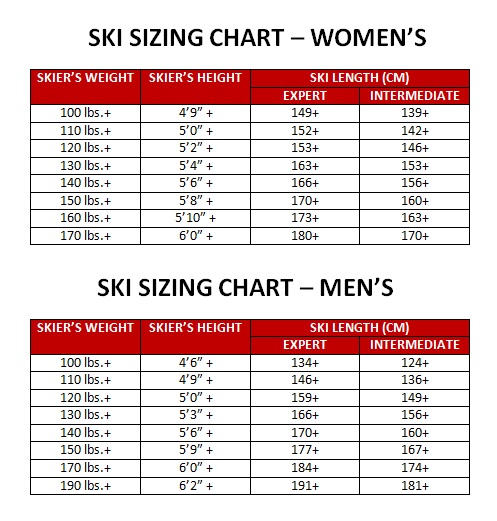Glide with Confidence: Mastering Water Ski Sizing
Ever felt that frustrating wobble as you try to stand up on water skis? Or maybe you're struggling to turn with ease? The culprit could be your skis. Choosing the correct water ski length and style is often overlooked, but it's a game-changer. Finding the right fit can transform your water skiing experience, turning a frustrating struggle into a smooth, exhilarating ride. This comprehensive guide will equip you with the knowledge to confidently choose the perfect pair of water skis, unlocking your full potential on the water.
Selecting the appropriate water ski size isn’t a one-size-fits-all proposition. It's a confluence of factors: your weight, height, skill level, and the type of skiing you intend to do (slalom, trick, or recreational). Getting it right means more control, improved balance, and ultimately, more fun. This isn't just about getting up on the water; it's about maximizing your enjoyment and minimizing the learning curve.
The history of water skiing dates back to the early 1920s, originating as "aquaplaning." Early skis were long and made of wood, requiring considerable strength and skill to master. Over time, materials evolved, shapes changed, and specialized skis emerged for different disciplines. The fundamental principle, however, remains the same: the proper ski size allows for efficient transfer of energy from the boat to the skier, enabling them to glide effortlessly across the water's surface.
One of the most common issues related to water ski sizing is overlooking the importance of skier weight. Many beginners mistakenly focus solely on height, leading to an improper fit and hindering progress. Similarly, failing to consider skill level can be detrimental. A beginner on skis designed for advanced slalom skiers will likely struggle, while an experienced skier on oversized recreational skis won't be able to perform to their potential.
Understanding the basic principles of water ski sizing is essential. Longer skis generally provide more stability at slower speeds, making them ideal for beginners. Shorter skis, on the other hand, are more maneuverable and responsive, preferred by advanced skiers for sharp turns and tricks. Width also plays a role: wider skis offer more surface area and increased stability, while narrower skis are faster and cut through the water with less resistance.
One benefit of choosing the correct water ski size is improved balance. With the right size, you’ll feel more stable and less likely to tip over, especially at slower speeds. This stability boosts confidence and makes learning new skills easier.
Another advantage is enhanced control. Properly sized skis respond more predictably to your movements, allowing for greater precision in turning and maneuvering. This control translates to a smoother, more enjoyable ride and faster progress.
Finally, the right size skis contribute to reduced fatigue. When your skis are properly sized, you expend less energy fighting for balance and control, allowing you to ski longer and enjoy the experience more fully.
Advantages and Disadvantages of Different Ski Sizes
| Ski Size | Advantages | Disadvantages |
|---|---|---|
| Longer Skis | More stable at slower speeds, ideal for beginners | Less maneuverable, harder to turn |
| Shorter Skis | More agile, responsive for advanced skiers | Less stable at slower speeds, challenging for beginners |
Frequently Asked Questions:
What size water skis do I need for my weight? Consult a size chart based on your weight and skiing style.
Do I need different skis for slalom and trick skiing? Yes, specialized skis are designed for each discipline.
Can I use adult skis for children? No, children’s skis are specifically designed for their smaller size and weight.
How do I know if my skis are the right size? You should feel balanced and in control, able to get up relatively easily and turn without excessive effort.
What is the difference between combination skis and slalom skis? Combination skis are wider and more stable, suitable for various activities, while slalom skis are narrower and designed for high-speed turns.
What are the best water skis for beginners? Longer, wider combination skis are generally recommended for beginners.
How do I care for my water skis? Rinse them with fresh water after each use and store them properly to prevent damage.
Where can I find water ski size charts? Many online retailers and water ski manufacturers provide size charts.
Tips and tricks for choosing the right size: Consider your binding adjustments. Properly adjusted bindings can enhance control and comfort. Don’t be afraid to demo different skis if possible. This can give you a feel for different sizes and styles before making a purchase.
Choosing the correct water ski size is paramount to enjoying the thrill of gliding across the water. From enhancing your balance and control to reducing fatigue and boosting confidence, the right fit transforms your experience. By understanding the factors influencing ski size – your weight, height, skill level, and intended skiing style – you can confidently select the perfect pair. Remember, investing time in finding the right fit pays dividends in enjoyment and progress on the water. Don't settle for a wobbly, frustrating ride. Empower yourself with the knowledge to choose wisely and unlock your full potential on the water. This thoughtful selection will not only improve your performance but also elevate your overall enjoyment of this exhilarating sport. Start your water skiing journey on the right foot, or rather, the right ski. Explore, experiment, and discover the perfect fit that will transform your time on the water.
Decoding the facebook heart what does it really mean
Unlock your bodys potential the ultimate guide to self care
Slay the roblox runway affordable baddie outfit ideas














